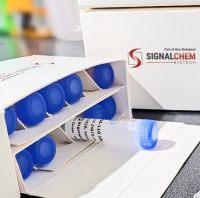p53 Induction Is a Marker of Neuronal Apoptosis in the Central Nervous System
互联网
725
Apoptosis is an active process of selective cell death that occurs during development and has been implicated in the pathogenesis of a variety of human diseases (Thompson, 1995). Apoptosis can be distinguished from the other major form of cell death, necrosis, on the basis of both morphological and biochemical features; these include chromatin condensation with nuclear pyknosis, and cytoplasmic shrinkage (Thompson, 1995). One prominent hallmark of apoptosis is a characteristic pattern of DNA cleavage into oligonucleosome-sized fragments that, under most circumstances, can be visualized by agarose gel electrophoresis. However, when relatively few apoptotic cells are present, fragmented DNA can be labeled in situ by more sensitive techniques. Using this approach, apoptotic cell death has been documented in the rodent central nervous system (CNS) following cerebral ischemia (Heron et al., 1993; MacManus et al, 1994), status epilepticus (Filipowski et al., 1994; Pollard et al., 1994; Sakhi et al., 1994) and adrenalectomy (Schreiber et al., 1994). Similar methods have been used to demonstrate apoptotic cells in the brain of patients with Alzheimer’s (Su et al., 1994; Lassamn et al., 1995) and Huntington’s diseases (Portera-Cailliau et al., 1995).









